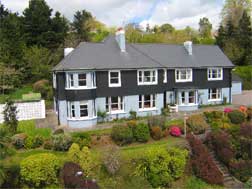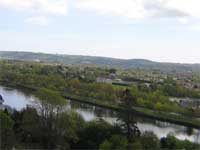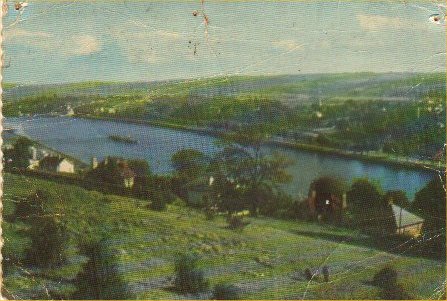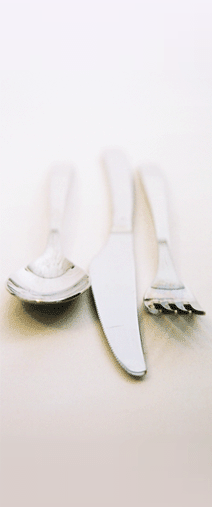I got a message from my brother Ted today telling me that our old family home; Tree Tops, has been bulldozed.
It shook me and I was filled with memories.
Tree Tops was so much a part of my childhood that I think sometimes it was like another parent for me, I never went back there after it was sold in 1973 but I often dream about it, (not just when I am asleep) and I try and convince myself that it wasn’t always summer there, and it wasn’t always as happy a place as I remember.
Now it doesn’t matter any more, its just a building site now but I feel entitled to mourn it.
When I started blogging three years ago one of the first blogs I did was about Tree Tops, it started off intending to be a piece on “houses I have lived in” but Tree Tops took over.
I am going to reprint this, as an obituary for a house I loved.
Tree Tops from May 3rd 2005

This is a picture of Tree Tops as it is today.
I was born in my Mothers and Fathers bedroom, in 1949, in our house in Cork.
(Top left hand room in the photo)
This was to remain my home until I moved out myself in the late Sixties.
Tree Tops, as it was called, was a huge, if not particularly aesthetically beautiful house. It was beautifully situated in Tivoli, up over the Lee with a long panorama down the river to the spire of Pugins cathedral in Cobh.

The view from Tree Tops today
The house itself was a bit of an architectural patchwork. It had started it’s life as a four bedroomed detached suburban villa in 1939 when my parents had had it built at the time of their marriage.
As their family started to grow they built extensions on each side of the house, fully doubling its size, and ended up with a fairly vast seven bedroomed mansion by the time I (their seventh child)was born.
What they were looking for with these extensions was more bedrooms both for the growing number of children and for the live-in staff. (Having live in staff was a not exceptional middle class practice in the forties and fifties)
Bedrooms were , the times again decreed, upstairs, so my parents were faced with large downstairs acreage to fill to give the bedrooms something to sit on. This gave us a very large kitchen with two pantries,both in themselves the size of a modern kitchen,it created a huge dining room down a long corridor which was fairly impossible to heat and used only for state occasions by us children, or,as the television was kept there, wrapped in an eiderdown, but only by hardy television addicts.
(Maybe I should thank my parents for thus giving me an aversion to television which persists to this day)
The old dining room became the Breakfast Room and this was used by us children until we were reckoned to be sufficiently civilized to join our parents in the Dining Room. (as the youngest of the seven I don’t ever remember making it)
The other ground floor extension became the Billiard Room( I apologise if this gets to sound like Cluedo). This room was huge and quite my favourite room in the house. It did, for a time, even have a billiard table, around which we played boisterous games of “roll the red” and the odd game of snooker or billiards. But then times got hard and it was sold off.
The room became my “house” while a child. There I would create a den, enclosed by chairs and rugs and be blissfully forgotten by my brothers and sisters.
It was of course a terrific room for parties and my older brothers and sisters used to hold Christmas Dances there in the years of affluence.
The excitement before these was immense. The room, having been totally de-cluttered, was turned into a sort of grotto with lights and decorations and , the bit I loved best, crystals were put on the floor.
These crystals were, I suppose, a kind of French chalk designed to make the wooden floor sufficiently smooth and glassy so that the waltzing , fox trotting and cha cha cha ing couples could glide gracefully over its surface. The day before the dance I would be given the job of rubbing in the crystals. First I would have to sprinkle the crystals all over the billiard room floor, then , with my shoes bound up in old cloths, I would have the time of my life sliding and skidding along the floor to my hearts content, Of course the more one glided and skidded the more slippery the floor got so that , by the end of the day, this became an exercise remarkably akin to ice skating.
On one occasion I got such an intense polish on the floor that the first few couples collapsed ignominiously on their bottoms and some salt had to be applied on top of the crystals so dignity and equilibrium could be maintained.
The same billiard room also became the venue for my three sisters weddings. Incredibly the room was able to fit the several hundred guests invited for what was then known as the “Wedding Breakfast “ (this even if it happened in the afternoon.)
However the real attraction of Tree Tops lay not in the house but in the garden. This was my Mothers domain and like the house was of huge size. All in all the house came with about 7 acres of grounds. A luxury even in the mid 20th century, and all this within in 2 miles of the centre of Cork city.
The house was built on a hill which was terraced in front of the house to provide us with a tennis court, some wonderful sloping lawns and, my mothers pride and joy, a rock garden. The tennis court was well used by the family All the siblings (with the exception of me, the youngest) became competent tennis players and two, my brother George and sister Fifi, played well.
The rock garden I dreaded as that was entirely under the control of my mother. (The two full time gardeners, being principally in charge of fruit and vegetables recognised the rock garden as being outside their remit)
My Mother spent many hours endlessly weeding the rock garden and would enlist any passing child as a helper to work at this Sisyphean task.
I must confess that she has given me a lifelong hatred of rock gardens and of alpine plants.
All the land behind the house was devoted to the kitchen garden. There we grew all the vegetables the household could need. There was always a plentiful supply of the basics like potatoes, carrots, onions, and cabbage.
The more exotic choices would come on stream in the summer when the tiny peas and the asparagus would fruit and I particularly remember the flavour of the first little new potatoes. These would be on the table within hours of being dug and I have never tasted better.
A lot of fruit was also grown at the back of the house. We must have had about 50 apple trees, both cookers and eaters. One particular beauty which yielded a huge crop of small sweet yellow/green eaters was of unknown origin as it had come to us as a stake to support another apple tree. The supported had died away but the mysterious and anonymous supporter had flourished and became the best yielder in the orchard.
There were also plentiful supplies of pears, plums and, in the green house the most marvellous white peaches.
Our abundance of soft fruit was such that quantities of it were sold to greengrocers in the town in summer.
Raspberries were my mothers particular passion and there was always a huge crop waiting to be picked in season. We were paid about 3 pence a pound to pick these (I don’t think my mother got much more from the shops) so we could always earn a few bob by putting in the time on the canes.
As well as raspberries there were also variations like white raspberries and loganberries on the canes,plenty of strawberries and bushes of bitter green goosberries which we were told would give us stomach ache if over indulged in.
The other selling crop was early tomatoes in the greenhouse. The combination of the scent of ripening tomatoes and white peaches from the greenhouse created the most beautiful perfume,and either smell, encountered today, trigger my recollections of times past just as Proust’s madeleine did.
The other significant produce from the kitchen garden were the herbs. I was forever being sent up the garden for a bunch of parsley, a sprig of thyme, a few chives, or to dig up a bit of horseradish to add fire to the Sunday roast. This area also housed the chicken run. We must have had several dozen chickens running around their enclosed run at any one time.
These ate all the household scraps and provided us with terrific eggs and wonderfully flavoured boiling fowl which was another Sunday dish served with a boiled ham and parsley sauce.(Another Proustian taste for me).
There were , as I have said, two gardeners looking after this abundance.
Bill was the younger of the two and also the more senior in rank, Jack was a little down the pecking order and did the rougher digging and hoeing. Both of them were kindness itself to us children and we spent countless hours talking to them as they worked. Bill would tell us tall tales of returned Yanks and his childhood in rural, now suburban Glanmire.
To the east of the house a drive way climbed up to the yard. At least we called it the yard. My Father always growled and said it was not a yard, we did not live in a farm, it was a car park. Here the gable wall had no windows and this provided us with the sport which most occupied our youth. We used this area to play tennis up against the wall. The wall was configured , as if deliberately, to impose exacting rules on this play.
The first three feet was smooth concrete and any ball that hit this area was deemed to be in the net and not allowed. The next eight or so feet up were pebble dash and from this surface the riccochet of the ball was completely unpredictable. This presented the players with a challenge as great as that of a skilled opponent. The rest of the height of the wall was tiled in great soft green tiles. From this there was little or no rebound,and more importantly they were sufficiently fragile that a ball hitting them at any speed would shatter them with a loud crack and then there would be the devil to pay.
This made us keep the ball both over the “net” and ensured that it didn’t go too high to be out of court. Something , in fact, like tennis. No wonder that some of the family became proficient at the real thing.
Above this area was meadow, about two acres of it, with some great trees from which swings could on occasions be hung. My parents, sporty types to a man, had levelled out a small putting green in the middle of this which would enjoy an occasional vogue with us children. What I loved about this whole area was that the grass was allowed to grow freely here in the summer. This provided me with a vast secret garden where you could remain hidden by the long grasses for as long as you liked. In fact by crawling between the grass I could and did create whole towns and mazes of streets and passages where I could escape from the most persistent brother or sister.
The remaining area of land, which fell outside the garden proper, was known as the field. The principal use for this land as I was growing up was for the two horses and a donkey which we gave a home to at various times. I suppose I must have ridden one or other of them sometime but can no longer remember.
I remember this field as a place where there were great bare scrubby acres
where you could walk alone to your hearts content. Where large stones could be turned to see the incredible activity of the ants as they moved the precious eggs underground, where in autumn the blackberries were so prolific that we never had to travel further afield to make our years supply of blackberry jelly and jam.At the very top of the field there was the very best view from the garden. This vista was used by John Hinde as a view of Cork harbour in his post card series.

My old and battered version of the John Hinde Post Card.
A view no longer possible as one half of the river has now been reclaimed.
(If you look very carefully you can see our two ponies in the bottom right hand corner)
I don’t suppose anyone truly becomes detached from those places where we spent our youth, despite our best efforts. When I started writing this piece I thought of it as one piece about the many places where I had lived. Tree Tops took over and demanded a full piece for itself.
I had a pretty idyllic childhood in Tree Tops. The house and the garden were always my refuge and comfort.
The family sold the house and the field in 1972 and bought a house very close by. I had moved away at that stage and thought for a long time that the house meant nothing to me.
Writing this has proved me wrong.
2 comments
